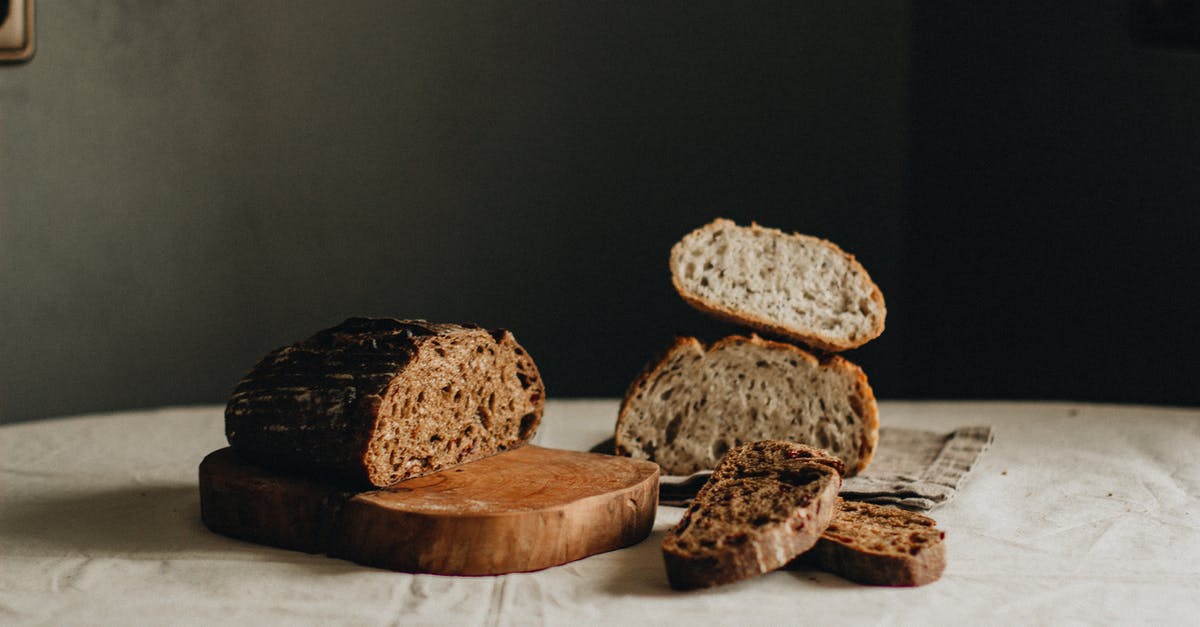Does oven spring differ between white and sourdough breads?

I see a ton of videos and photos of beautiful sourdough breads with amazing oven spring and ears like this: https://preview.redd.it/5h5dh6a898h51.jpg?width=960&crop=smart&auto=webp&s=3045d24e2922be3253092e9587032d3d0d825727
I've read on how to get better oven spring and seem to be following every method. Unfortunately the sections that I score tend to get very wide but I don't get enough vertical rise to create "ears" and very rustic looking loaves.
The main difference between what I'm doing and these great looking sourdough loaves is that my loaves are 100% standard bread flour with active dry yeast. These are not sourdough loaves. I don't know why that would matter, but maybe it does? I can't find nearly as many "ears" and intense oven spring in photos of white loaves.
Best Answer
In my experience, there’s no reason to assume that it’s because of the dough type. Both can get good oven spring and ears. Due to the way the yeasts and bacteria in a sourdough work, I find sourdough breads to be more finicky than pure yeast ones.They can get softer and flatten during the final rest, where yeast-only breads typically keep the surface tension and shape better.
I recommend you take a closer look at
- Proofing time:
Aim for slightly under instead of fully or even slightly over. Note that the margin of error is smaller for yeast breads, especially if you use the “fast” recipes with a rather high amount of yeast. - Shaping:
A good surface tension helps the slashes to open better. - Slashing technique:
Flat, almost horizontal cuts with a swift blade gives the coveted ears, vertical cuts just open up like a blossom unfolding. - Humidity during the initial phase:
Don’t just spritz a bit of water in the oven and forget the “place a bowl in the oven” recommendations, that won’t give you a sufficient humidity level in the oven. You need quite a bit of thermal mass (some place a tray full of stainless steel nuts and bolts in the oven) and enough water that you should get to evaporate in one go. I usually splash a scant cup of water just off the boil right into the oven when I have just placed the loaf. (Careful, that’s a lot of steam and you can hurt yourself if you aren’t quick. Some ovens even can warp due to thermal shock, but I can live with that.) Open the oven door for a minute when the first phase is done and your oven spring has happened, usually by the time you lower the heat. Or bake in a Dutch oven.
Pictures about "Does oven spring differ between white and sourdough breads?"



Why does my sourdough not have oven spring?
One of the biggest reasons sourdough enthusiasts don't get the sourdough oven spring they're after is because they over ferment their dough. It's tough - it can all happen so fast! But if your dough has over fermented then it won't have any energy left to spring up in the oven.How do I make my sourdough bread oven spring better?
The summary: How to get great oven spring in your sourdough breadWhat is oven spring bread?
Oven Spring noun: In bread baking, the final burst of rising just after a loaf is put in the oven and before the crust hardens. When the dough hits the hot oven, it can puff up to as much as a third of its size in a matter of a few minutes.What factors affect oven spring?
There are many factors that influence the degree and quality of the oven spring when baking bread: overall dough quality, the amount of yeast in the dough, the degree of fermentation (it should not be under fermented or over fermented), and oven temperature.5 WAYS TO GET A BETTER OVEN SPRING | SOURDOUGH BREAD TIPS
Sources: Stack Exchange - This article follows the attribution requirements of Stack Exchange and is licensed under CC BY-SA 3.0.
Images: Karolina Grabowska, Ksenia Chernaya, Marta Dzedyshko, Anthony
